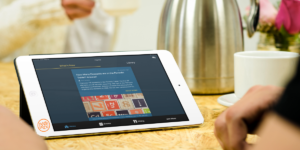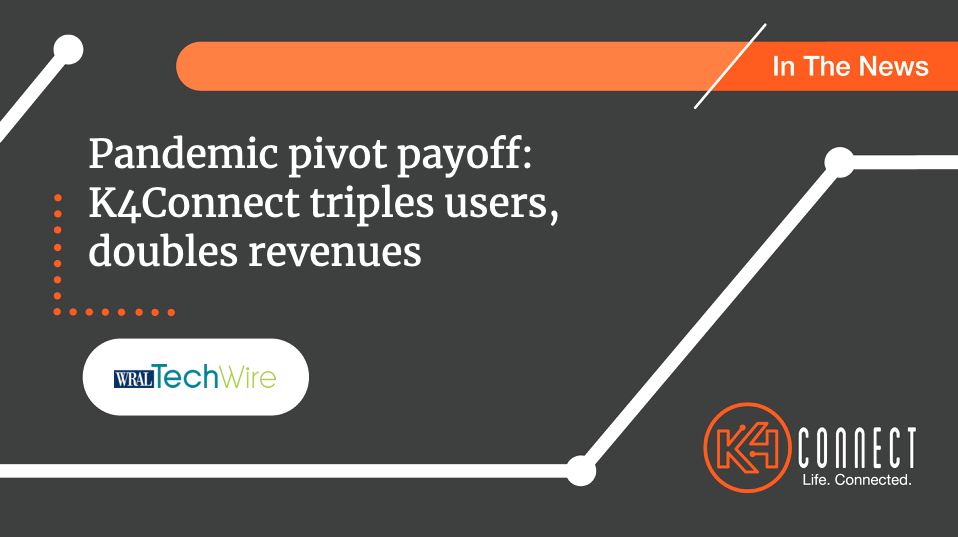The company, which provides technology to companies serving older adults as well as individuals with disabilities, plans to continue expansion in 2022, according to a company statement and to company co-founder and CEO Scott Moody.
February 15, 2022
MORRISVILLE – K4Connect, a Triangle-headquartered healthcare technology provider, reported this week it had tripled its member base and doubled company revenue during the prior two years.
The company, which provides technology to companies serving older adults as well as individuals with disabilities, plans to continue expansion in 2022, according to a company statement and to company co-founder and CEO Scott Moody.
The company has raised more than $35 million in funding, including $12 million raised during the pandemic, the company statement noted. And it raised additional funding in December 2021, Moody told WRAL TechWire this week. 
That funding in December came from Second Century Ventures, the strategic investment arm of the National Association of REALTORS, following the participation of K4Connect in an April 2021 program led by the firm.
“For-profit investments in senior housing development are growing and we see both our participation in the program and SCV’s investment as recognition of the need to incorporate smart technologies,” said Moody. “Most importantly, data and analytics, into the property technology market to meet the Boomer demand as this generation begins to age into senior housing.”
A PANDEMIC PIVOT
The company pivoted during the early months of the pandemic, said Moody, expanding the company’s features and adding product releases that worked to address core challenges that communities were encountering.
“The pandemic pulled much of the world to a screeching halt. For us, it served as an opportunity to deliver on our mission of using technology to better serve older adults,” said Moody.
“Certainly early days in the pandemic communities were not immediately surveying new technologies,” said Moody. “They needed to focus on resident safety and service.”
But what did become clear during this initial response to the new challenge of a global pandemic where so much was unknown, said Moody, was that scaling critical communications and community management would prove to be incredibly challenging without “the digital piping to do so.”
“We saw operators turning to either new technologies to solve these issues or new implementations of existing technologies for communities who already had tooling in place,” said Moody. “The evidence of this growing appetite for tech can be found in any number of surveys and reports from senior housing investment firms, the vendor ecosystem and supporting associations. And we’re seeing it first hand with our customers as residents and staff now value the technologies they depended on to get through the pandemic – it’s become a part of daily life.”
Moody noted that the company quickly pivoted to shift product focus to new releases of tools that could advance communications efforts, socialization techniques, and enhance community safety. They also began to operate using contactless and remote deployments, which Moody noted allowed the company to give communities resources without risk.
4 MILLION AND GROWING
Moody noted that while 77% of older, aging adults would prefer to age at home for “as long as possible,” according to a 2021 AARP survey that contacted respondents in June and July 2021, there are about 4 million older adults across the care continuum right now.
But just because there are communities doesn’t mean that those who chose to live at home won’t need access to similar tools that enhance communication, socialization, and safety.
“The need to provide technology resources both for the individual and their at-home caregivers – whether family members or care agencies – is essential,” said Moody. “We’ve proved the need for communications, engagement, safety, and data-driven resources in the senior living market over the last seven years; we’re taking what we know of how to best serve the older adult and testing what that looks like in the home setting.”

